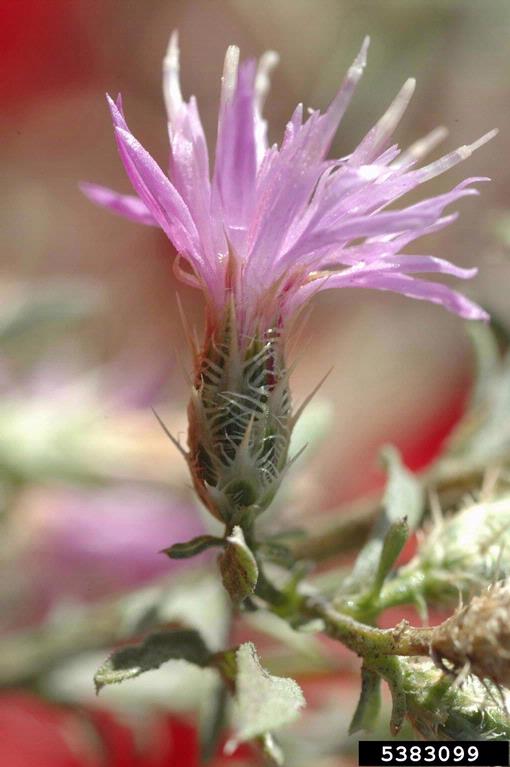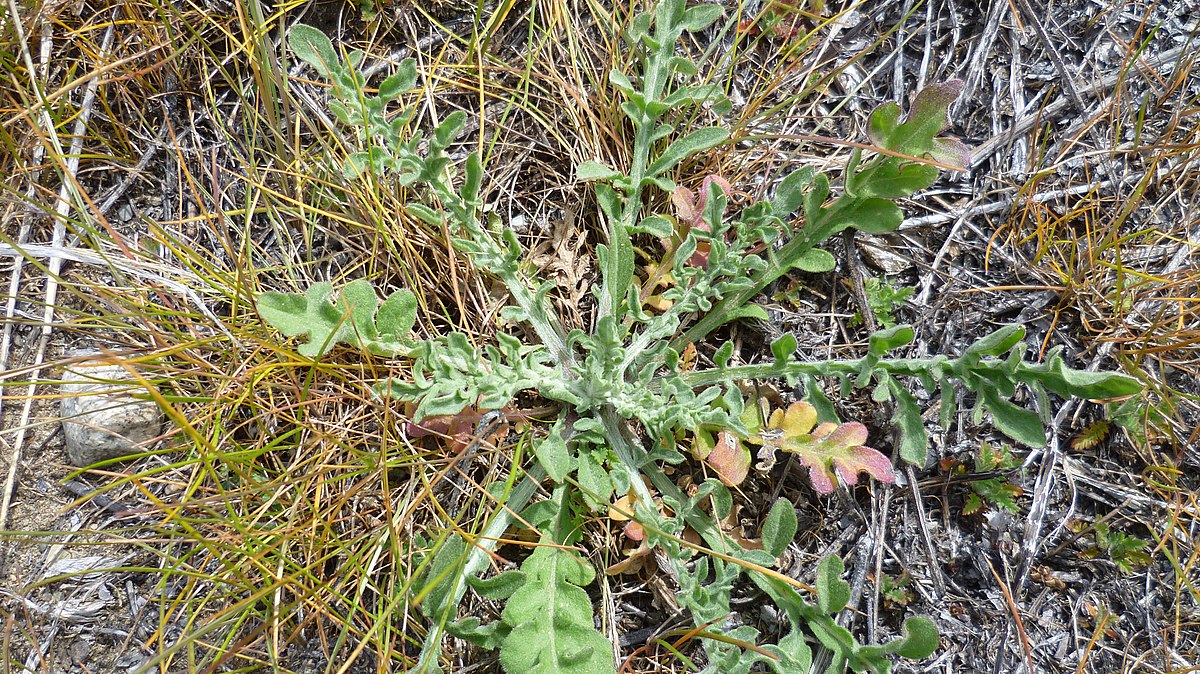Diffuse Knapweed

Diffuse Knapweed
(Centaurea diffusa)
Priority: - Established / Strategic Control
Tags: Agricultural | Terrestrial | Biocontrol
Identification and Reproduction
Identification:
- Diffuse knapweed is a biennial or short-lived perennial, in the Asteraceae family.
- It will grow no more than a meter in height.
- Each stem will be heavily branched and covered in stiff white hairs.
- Leaves are divided, hairy, grey-green, and alternate in arrangement.
- Leaves will decrease in size as you move up the stem.
- This plant has urn-shaped, white to lavender flowers. They have small sharp spines.
- Overwinters as a rosette.
Reproduction:
- It is a prolific seed producer; each individual plant can produce up to 140,000 per square meter.
- Seeds can remain dormant for 5-10 years.
- Seeds are easily spread by wind, animals, people, vehicles, hay, and equipment.
Habitat & Ecology
- It is found across southern B.C. and invades forests, roadsides, grasslands and recently disturbed sites.
- They are very resilient; diffuse knapweed can withstand drought, trampling, and extremely rocky soils.
- It thrives in exposed areas with well-drained soil.
Impacts
Social:
- Degrades rangeland and pastures.
- Displace livestock forage crops.
- Livestock will avoid knapweed since it is spiny and bitter in taste.
- Contact can cause skin irritation.
Ecological:
- Increase soil erosion and runoff.
- Will displace native vegetation.
- Dead plant material may increase fire risk.
- Has an allelopathic property that will inhibit other plants from growing.
Management
Mechanical/Manual Control:
- Prior to seed production, pulling, cutting or mowing will be effective.
- If done while flowers are present be sure to properly dispose of plants, preventing dispersal of viable seeds.
- The root system should also be fully removed to reduce re-establishment.
Biological Control:
Currently 12 biocontrol agents have been usedin the Mainland/Coast Region for the spotted knapweed and is being monitored by the Ministry of Forests and Range. Bio-controls help decrease the knapweed size, growth and seed production.
Chemical Control:
- Currently picloram, dicamba, 2,4-D, clopyralid, aminopyralid and glyphosate are registered as effective herbicides on knapweed.
- It is recommended to wick or select spot spray plants.
- Please carefully read herbicide labels prior to application.
Resources
Download the Invasive Species Council of BC's Factsheet on Knapweeds here.
View the Alberta's Invasive Species Council's Factsheet on Diffuse Knapweed here.
Header photo (Stefan.lefnaer).
Photo Gallery

×






